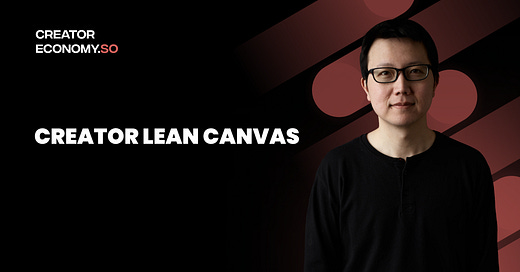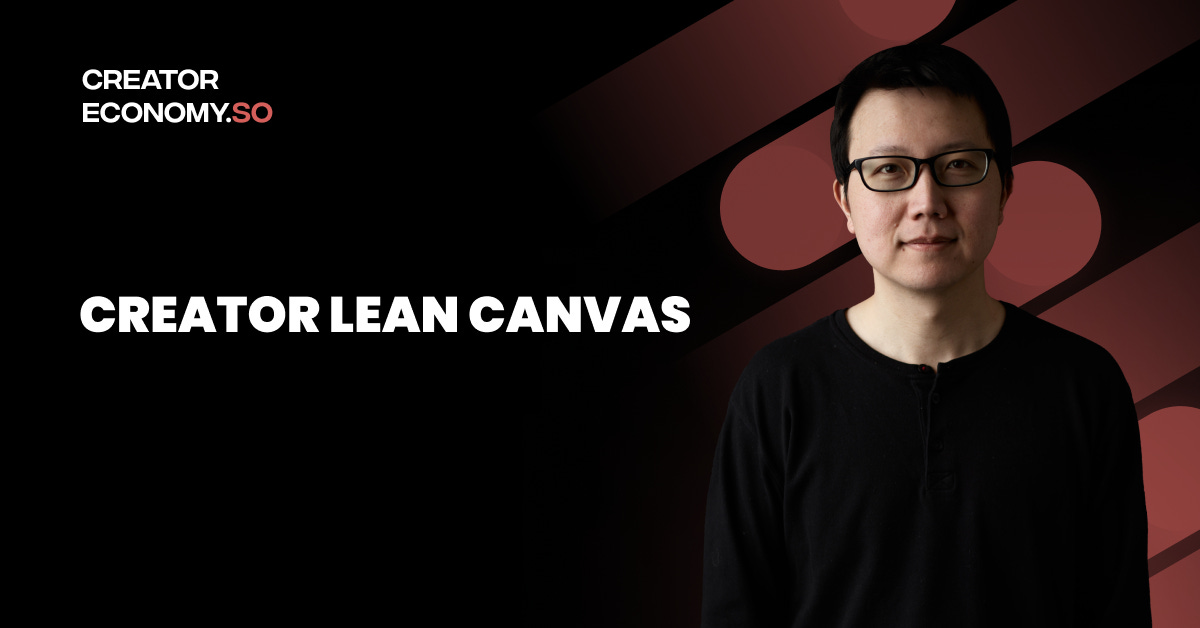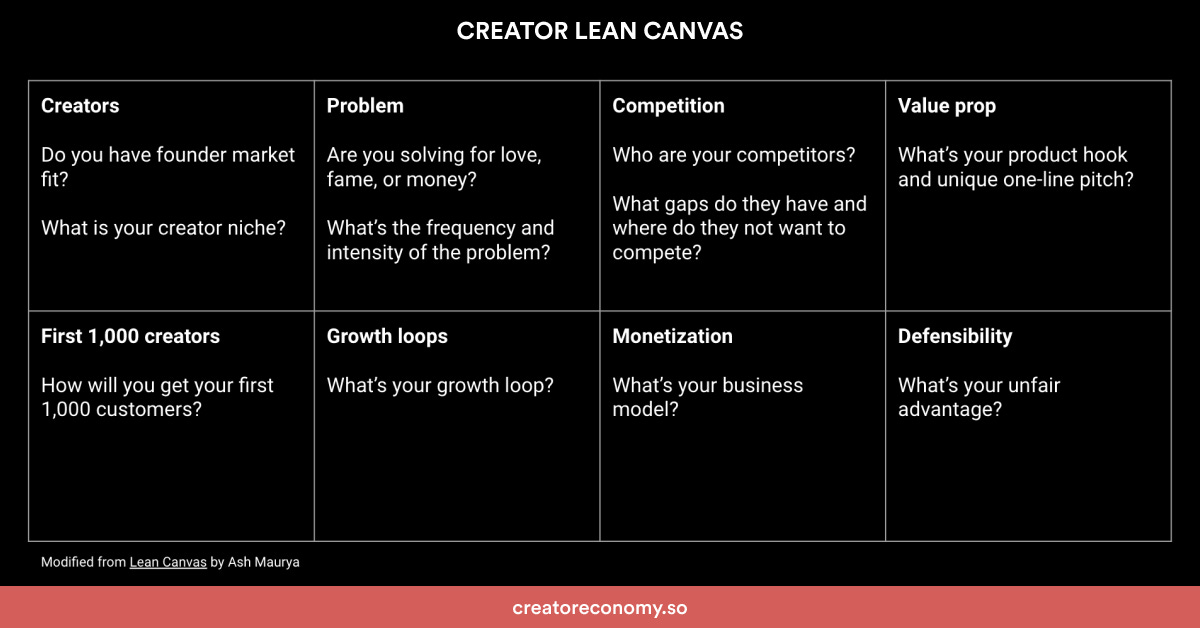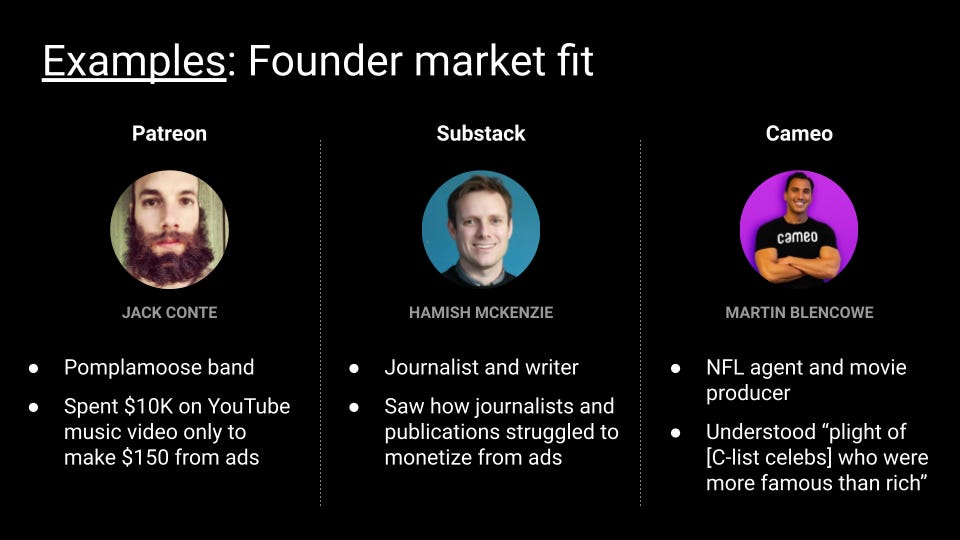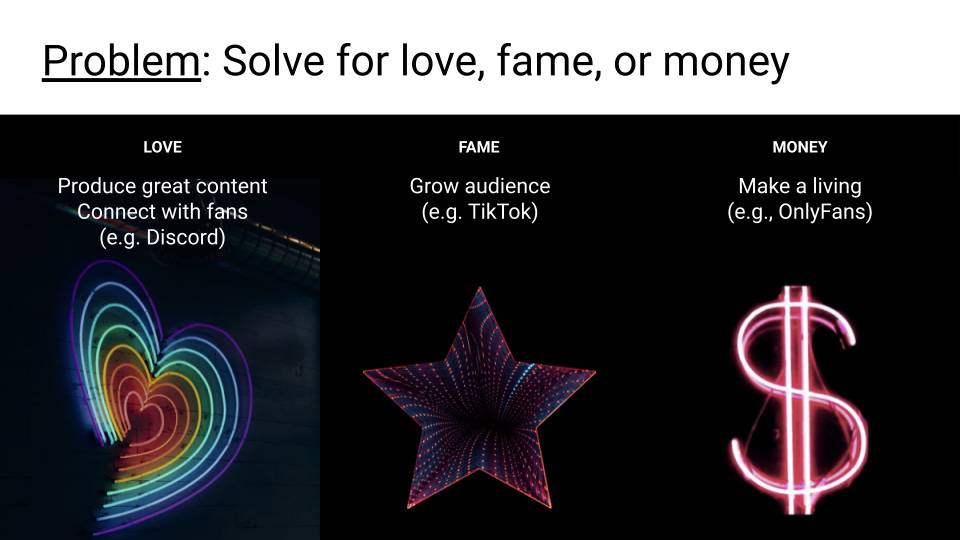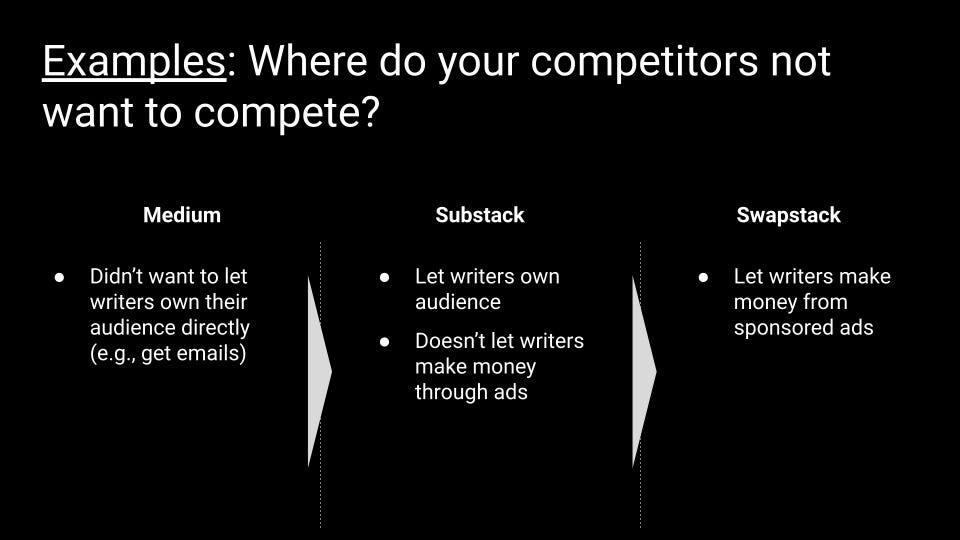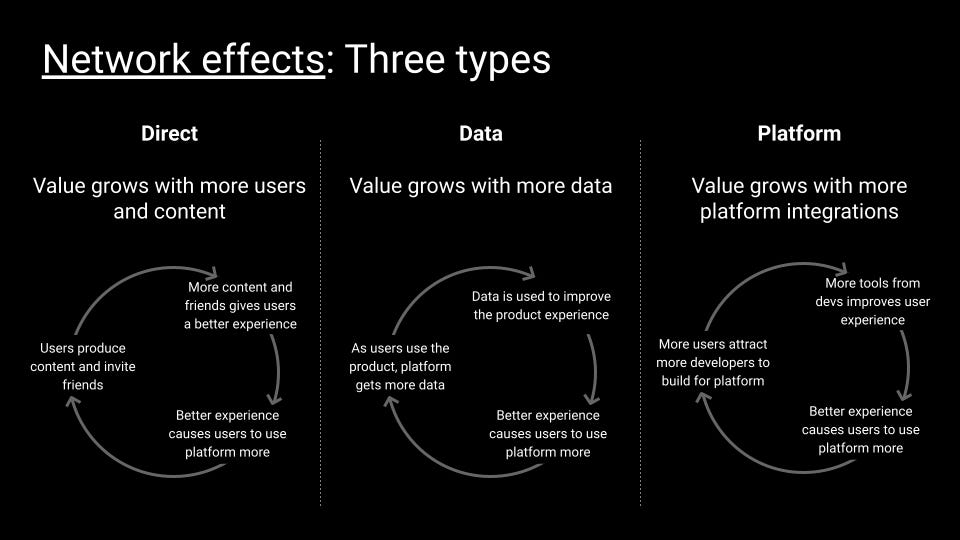Level up your product and creator skills in just 5 min a week. Join 50,000+ readers:
Dear subscribers,
The creator lean canvas is a framework that gives you one place to answer the most important questions about your creator business.
If you’re a creator or a founder building a product for creators, filling out this canvas upfront can save you a lot of pain later. Let’s walk through each step in detail.
Now let’s cover the canvas using Substack as an example:
1. Creators
Do you have founder-market fit?
Good signs include founders who are:
Obsessed about the problem
Have deep domain expertise
Have access to creators in their niche
For example, Hamish (Substack co-founder) used to be a journalist and understood how difficult it was for professional writers to monetize their audiences.
What’s your creator niche?
You should target a creator niche that:
Is serious about growth
Has high word of mouth
Has a major pain point
For example, Substack targeted writers and journalists who had large audiences but struggled to make money. Their first customer was Bill Bishop who writes a popular newsletter about China.
2. Problem
Are you solving for love, fame, or money?
If you’re building a product for creators, then you need to solve for:
Love: Help creators produce content and connect with fans.
Fame: Help creators grow an audience.
Money: Help creators make a living.
For example, Substack started by solving for love (publishing tools) and money (subscriptions). They’re now expanding to fame through writer recommendations and a new app.
What’s the frequency and intensity of the problem?
You want to solve for painkillers (must-haves) instead of vitamins (nice to have). Talk to creators to identify problems that they face urgently and frequently.
For example, both Substack and Whale (a video Q&A app) wanted to help creators make a living. But Substack targeted journalists and writers while Whale targeted VCs and tech executives. You can guess which niche had the real money problem.
3. Competition
Who are your competitors?
Your direct competitors are those who are targeting the same customer, same problem, and same solution. But secondary competitors could also enter your space.
Substack’s direct competitors are major publishers (e.g., New York Times) and self-publishing platforms (e.g., Medium). Their secondary competitors include community platforms that have a newsletter component.
What gaps do competitors have (where do they not want to compete)?
Identify gaps that your competitors have in solving the love, fame, or money in your creator niche. Make an effort to understand where they don’t want to compete.
For example, Substack grew on the back of Medium’s unwillingness to let creators own their audience (e.g., email addresses).
4. Value prop
What is your unique one-line pitch?
Craft a succinct one-line pitch only after you understand your customers, problems, and competitors.
For Substack, the one-line pitch was “Make it simple to start a publication that makes money from subscriptions.” Since they expanded to solve for fame as well, the pitch has evolved to “The home for great writers and readers.”
5. First 1,000 creators
How will you get your first 1,000 customers?
Here are a few tactics that you can use:
Reach out to a creator niche directly (e.g., warm intros, direct sales)
Build in public to attract an audience
Use online channels (e.g., YouTube, Instagram)
Use offline channels (e.g., local craft markets)
Provide concierge service (e.g., manual onboarding for top creators)
Partner with creators (e.g., referrals)
Create FOMO to drive word of mouth (e.g., waitlist)
I cover each tactic in detail in my online course.
When Substack was getting started, they used direct outreach to onboard top writers like Kelly Dwyer (former NBA writer), Anthony Pompliano (crypto), and Azeem Azhar (industry analysis).
6. Growth loops
What’s your growth loop?
The creator growth loop works as follows:
Target a high word of mouth creator niche
Help creators in this niche with love, fame, or money
Creators bring more fans to your platform
Attract creators and fans from word of mouth
The creator growth loop is actually three different loops depending on whether you’re solving for love, fame, or money.
Substack, for example, uses the money loop:
Target journalists and professional writers
Help creators in this niche make money from subscriptions
Creators bring more readers
More creators join from word of mouth
7. Monetization
What’s your business model?
Here are a few questions to answer when thinking about your business model:
Who to charge: e.g., creators, fans, or 3rd parties?
How to charge: e.g., ads, take rate, SaaS, one-time, or hybrid?
When to charge: e.g., upfront, freemium, trial, or commission?
What to charge for: e.g., features, transactions, or users?
How much to charge: Price, take rate
For example, Substack charges a 10% take rate for paid subscriptions.
8. Defensibility
What’s your unfair advantage?
How do you defend your business from new entrants? Broadly, there are three moats:
Network effects: Your product becomes more valuable with:
More users and content: e.g., Substack
More data: e.g., Facebook
More platform integrations: e.g., Metamask
Brand: A strong brand creates an emotional connection with your creator niche. You know you have it when your niche starts seeing your product as the go-to solution for their problem. Substack certainly fits the bill here.
High switching costs: For example, Discord has an entire ecosystem of bots and customizations that makes it harder for communities to switch.
Economies of scale: As your platform scales, your per-unit costs might decrease. A merch business is a great example.
Here’s how the canvas might look for Substack when filled out:
Try using this Google slide template to fill out the canvas for your own company or product. It shouldn’t take more than an hour and is worth it to get a holistic view of your business. You can also keep this canvas updated as things change.
Subscribe below to level up your product and creator skills in just 5 min a week:
If you enjoyed this post, consider taking a moment to:
Refer a friend to unlock my 180+ page PM book and paid subscriptions for free.
Sponsor this newsletter to reach 50,000+ tech professionals and creators.

